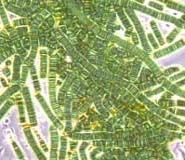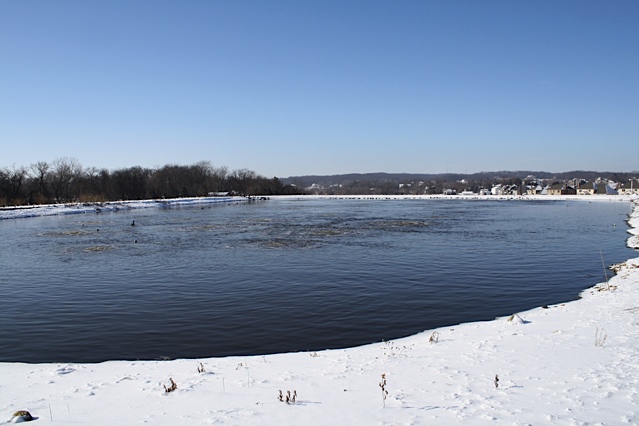Sources of ammonia and nitrogen in lagoon effluent

Lagoon ammonia levels have become a concern for many municipalities, who must find ways to comply with the EPA’s new effluent limits. But where does ammonia come from?
There are multiple sources of nitrogen in wastewater lagoons:
- Human urea
- Industrial wastewater, especially from mining, crude oil processing, metal finishing, and pharmaceutical production
- Food processing facilities effluents
- Many household cleaning products
- Anaerobically digesting sludge on the bottom of your lagoon
High levels of ammonia in discharge waters are toxic to aquatic life and disrupt the balance of the ecosystem. The EPA’s effluent limits on ammonia are designed to protect surface waters by reducing the discharge of ammonia into the environment.
The Nitrification Process, Simplified

Ammonia is a compound of Nitrogen and Hydrogen that, as a gas, has a putrid smell most commonly associated with cat urine. Known as Ammonia-Nitrogen, it is comprised of both NH3 and NH4—with NH3 being the primary target for new effluent permits. Nitrification describes the biological process by which special bacteria called Nitrosomonas consume ammonia and excrete nitrites. Another type of bacteria called Nitrobacter then converts these nitrites into nitrates.
By this nitrification process, lagoon ammonia can be biologically removed to permit levels if the right lagoon conditions are present to support the nitrifying bacteria. The ideal conditions for efficient nitrification are:
- Healthy levels of dissolved oxygen (DO)—In order for lagoon nitrification to occur, a minimum working DO level of 2.0 mg/L is required and a DO level of 5 mg/L is optimal. As a result, you must ensure that your lagoon aeration system is properly sized, and working efficiently and effectively enough to provide the oxygen needed to remove ammonia from your wastewater lagoon via nitrification.
- BOD must be removed first—Nitrifying bacteria do not compete well against BOD-removing heterotrophic bacteria. For nitrification to take place, BOD levels must be sufficiently reduced in order to eliminate competition. Generally a BOD level of 20–30 mg/L is required before lagoon ammonia removal can begin to occur.
- Lagoon pH at 7.5–8.0—Lagoon nitrification is pH-sensitive, and ammonia treatment rates decline significantly at pH values below 6.8. Optimal lagoon nitrification rates occur at pH values in the 7.5–8.0 range. Most municipal wastewater lagoons will naturally have a pH in this range. However, industrial wastewater lagoons may vary, so be sure to monitor these levels closely.
- Sufficient lagoon water temperature—Nitrification slows as water temperature decreases. The optimal temperature range for lagoon nitrification is 82֫–97° F. This is clearly unrealistic for most wastewater lagoons, but acceptable rates of lagoon nitrification can also be achieved at or above 68ׄ° F.
- Sufficient Nitrifiers—Nitrifying bacteria are known as “attached growth organisms” because they like to grow on any surface available to them. In a lagoon this surface area constitutes the lagoon walls, baffle curtains, aerators, and any other available surface. The more surface area you have, the more overall nitrifying bacteria will grow. Higher levels of nitrifying bacteria lead to faster nitrification.
- Adequate mixing—Ammonia can be released as a result of sludge accumulation being anaerobically digested at the bottom of the lagoon. Without sufficient lagoon mixing, sludge levels will undoubtedly increase. As a result, ammonia effluent levels can actually end up being higher than that of influent. Ideally, it is recommended that sludge depths remain below two feet.
- Absence of toxins—Nitrifying bacteria are more easily inhibited by toxic compounds, such as heavy metals, than are the BOD-reducing bacteria. Make sure your wastewater does not have any toxins that might inhibit lagoon nitrification.
Cost-Effective Lagoon Ammonia Removal
 Lagoon ammonia removal via nitrification can be achieved without scrapping your current treatment system. The NitrOx® Reactor was designed to be incorporated into an existing system for the sole purpose of ammonia removal, helping to keep capital costs low—at 2/3 the cost of existing nitrification options—and minimize the financial burden of plant upgrades. The NitrOx system, through controlled thermal regulation, biomass, mixing, and aeration, optimizes conditions for nitrification, even in cold weather.
Lagoon ammonia removal via nitrification can be achieved without scrapping your current treatment system. The NitrOx® Reactor was designed to be incorporated into an existing system for the sole purpose of ammonia removal, helping to keep capital costs low—at 2/3 the cost of existing nitrification options—and minimize the financial burden of plant upgrades. The NitrOx system, through controlled thermal regulation, biomass, mixing, and aeration, optimizes conditions for nitrification, even in cold weather.
Read about our successful NitrOx lagoon ammonia installation in DeSoto, Iowa.
Download the NitrOx Technical Information for more information on cost-effective Lagoon Ammonia Removal.

